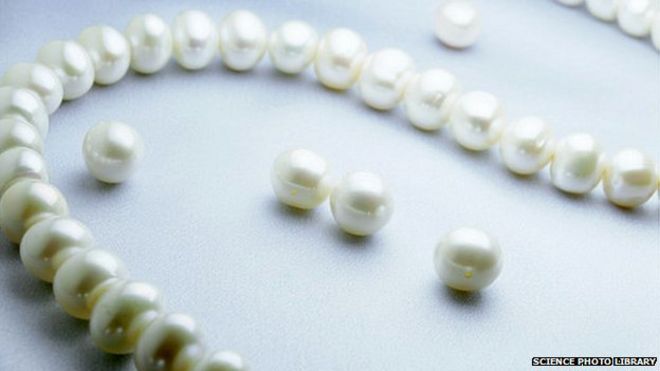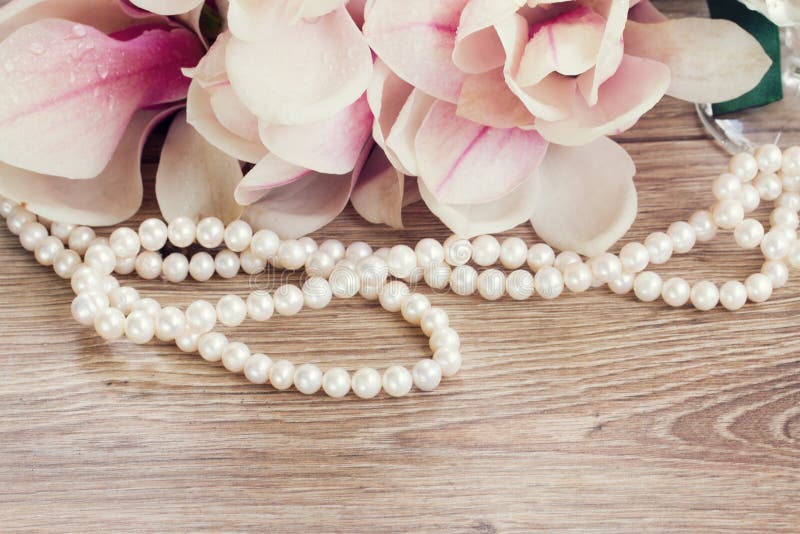Pearls are one of the earth’s most beautiful natural treasures. Humans have prized them for thousands of years and were significant in many different ancient cultures, including Ancient Egypt and Ancient Rome. As a result, pearls continue to be an extremely popular option today. They are loved globally for the timeless aesthetic that has made them a quintessential piece of gemstone jewelry. Despite this, some people are still unclear about a few different aspects relating to pearls. This article provides an in-depth answer to one question that many people continue to ask us: how are pearls made? While this may sound like an obvious question, it’s not as simple as it may seem. We begin by talking about how a pearl is formed and continue to describe how they are harvested and, finally, how they are prepared for jewelry.

(Image Courtesy of BBC)
Where Do Pearls Come From?
Pearls are indeed one-of-a-kind, especially when you consider that they are the only gemstones to come from a living creature. Mollusks such as oysters and mussels create pearls. In freshwater rivers and ponds, mussels produce pearls, while in saltwater, they are made by oysters. Today, freshwater pearls available on the market come primarily from China. On the other hand, Saltwater pearls are found off the coast of Japan, French Polynesia, and Australia. There are a few different types of pearls, including Akoya, Handama, Tahitian, and South Sea. Each type is unique in appearance, quality, and price.
How are Pearls Made?
So, pearls come from oysters and mussels, but exactly how do they create them? The process begins when a particle, or what is referred to as an irritant, gets inside the mollusk—this particle, in essence, functions as the nucleus of the pearl from a very early stage. Once the irritant becomes trapped, the mollusk begins to coat it with nacre as a defense mechanism. Nacre is a composite made mostly of aragonite that is strong and iridescent. The unique luster (or glow) of pearls comes from this nacre. The mollusk coats the nucleus with thousands upon thousands of layers of nacre, and over time, a pearl begins to form slowly. How long it takes for a pearl to form is dependent on the growth rate of the nacre. Most pearls typically take anywhere between two to four years to develop fully.

(Image Courtesy of Dude I Want That)
What’s the Difference Between Natural and Cultured Pearls?
Before creating cultured pearls in 1893, all pearls that came from mollusks were natural pearls. In the previous section, we described how pearl formation begins when a particle gets inside an oyster. The most significant distinction between natural and cultured pearls is the way that this particle gets introduced. Natural pearls form without any human interference whatsoever. The irritant getting trapped in the mollusk occurs completely by chance. For cultured pearls, farmers deliberately plant an irritant inside the mollusk through a delicate incision. Today, however, nearly all pearls you will find on the market are cultured. Natural pearls are both exceptionally rare and extremely pricey.
How are Pearls Harvested?
Once a pearl is fully formed and big enough to be harvested, the next step is to remove it from the mollusk. Harvesting a pearl is an extremely delicate process which requires expert precision and great care. First, the mollusk is very gently opened, just enough to access the pearl. The pearl is then carefully removed using specially made surgical tools. Making sure no harm is done to the mollusk during the retrieval process is extremely important. If the harvested pearl is of premium quality, farmers will use the mollusk again to produce another pearl. Once the pearl has been harvested, the final step before it hits the market is preparing it for jewelry, which we talk about next.
How are Pearls Prepared for Jewelry?
Before pearls are sold to jewelers, they have to be prepared. The preparation process is divided into five sequential steps: finishing, sorting, drilling, matching, and threading. First, the pearls are soaked for a couple of days in a mild cleaning solution under fluorescent light. This removes any unwanted residue and enhances the pearls shine. Next, pearls are sorted by size, shape, color, luster, and grade to determine their value. The third step is drilling the pearls, which an expert uses a complex machine to create perfectly aligned holes. Pearls that will be used for bracelets and necklaces are drilled all the way through, while pearls for earrings are only half drilled. Finally, because each pearl is unique and no two are exactly the same, matching is an extremely time-consuming process in which an expert looks through thousands of pearls to put together a matching set. The last step in preparing the pearls is threading the gemstones onto strands.
Once the pearl is in the hands of a jeweler, they will rethread the pearls using silk thread. During this, jewelers create a knot between each pearl, for a few different reasons. One reason is to prevent the pearls from rubbing together, which can damage them. Another is to avoid losing multiple pearls in the case that the string breaks. Finally, depending on the type of jewelry (and if it’s a necklace, the pearl necklace length), the pearls have specific spacing and tension which is accomplished with these knots. At this point, the pearls are ready to be sold to the public.
What are Lab Created Pearls?
Natural and cultured pearls are the only types of pearls that experts consider authentic. This is because mollusks produce them, and the pearl formation is entirely organic, all occurring inside the creature. On the other hand, lab-created pearls are artificial and regarded as fake pearls in the pearl industry. Lab-created pearls are typically created using oyster shells, though plastic and glass are also sometimes used. Because imitation pearls are sometimes referred to as mass-produced, they are very inexpensive, especially when compared to authentic pearls.




(Image Courtesy of Dreamstime.com)
All of this information may seem unnecessary if you’re merely trying to make a quick pearl jewelry purchase. However, having this additional knowledge allows you to truly understand how exceptional pearls are, which becomes more evident as soon as you learn how these gemstones form in nature. You are also in a much better position to choose an exquisite piece of pearl jewelry that you will treasure for a lifetime. So, what’s the next step? Finding the perfect piece which you absolutely can’t live without. Fortunately, there are endless options. We suggest starting your search by first choosing the type of pearl you are interested in.